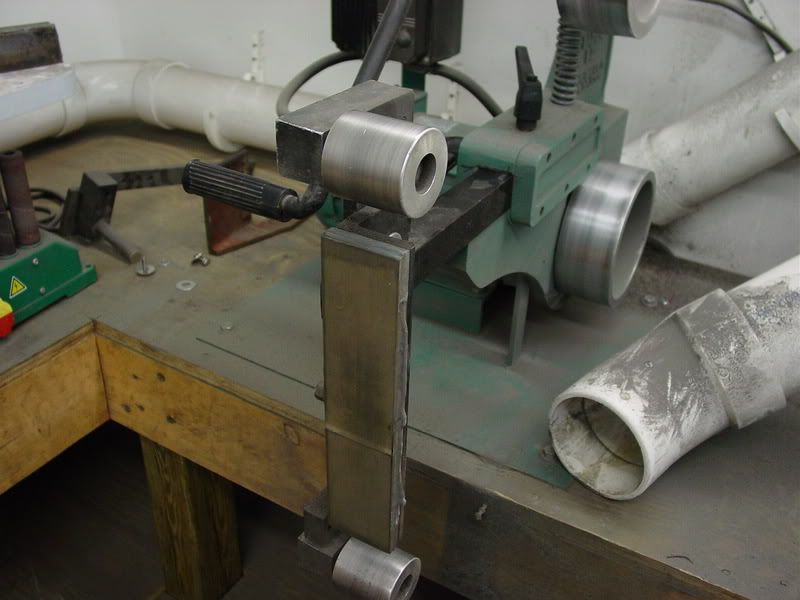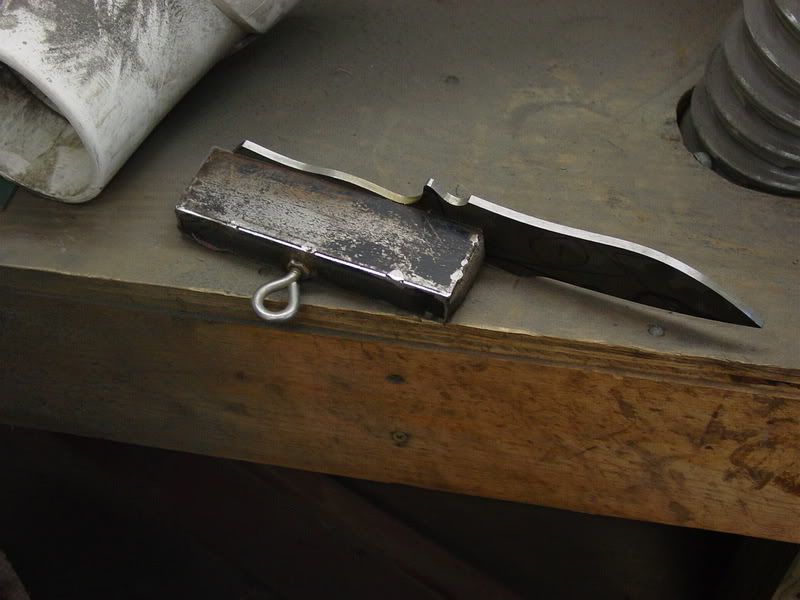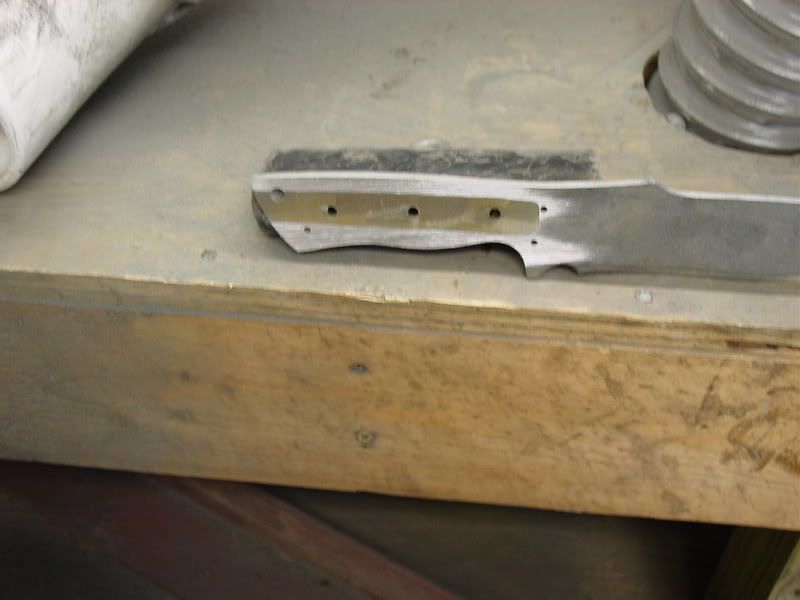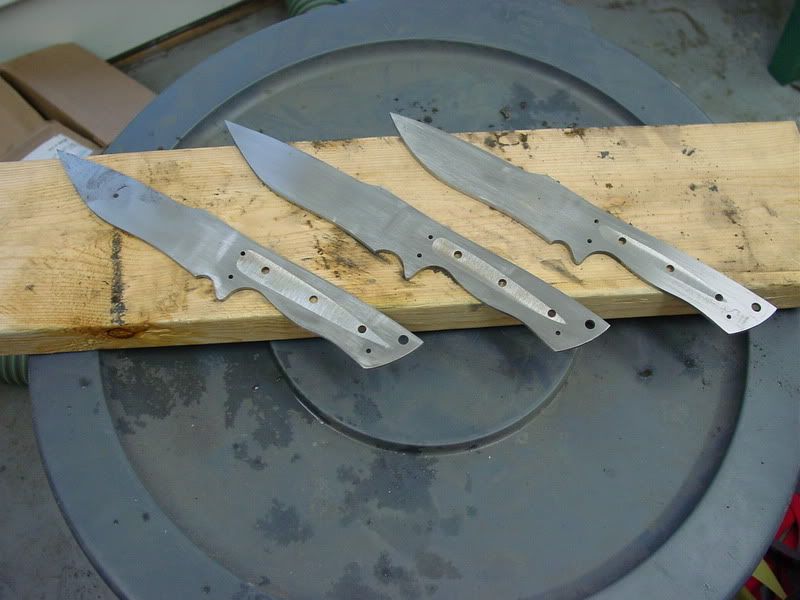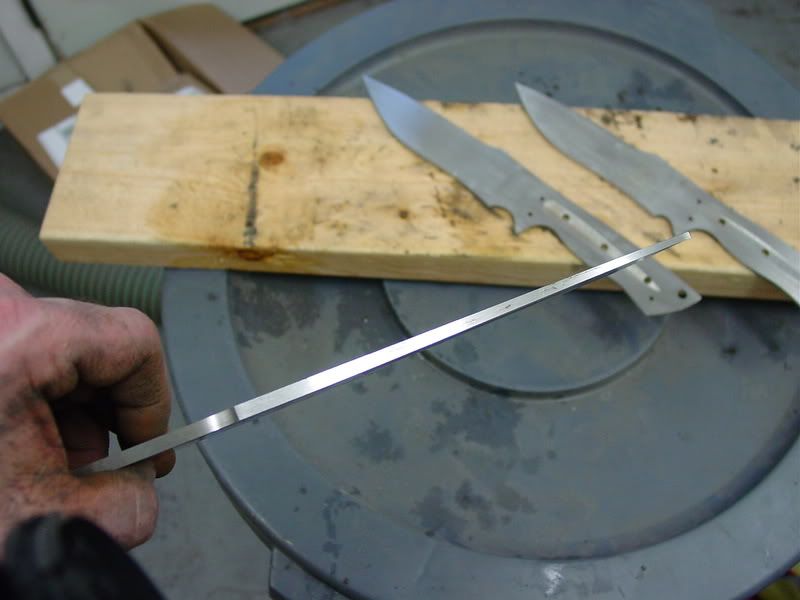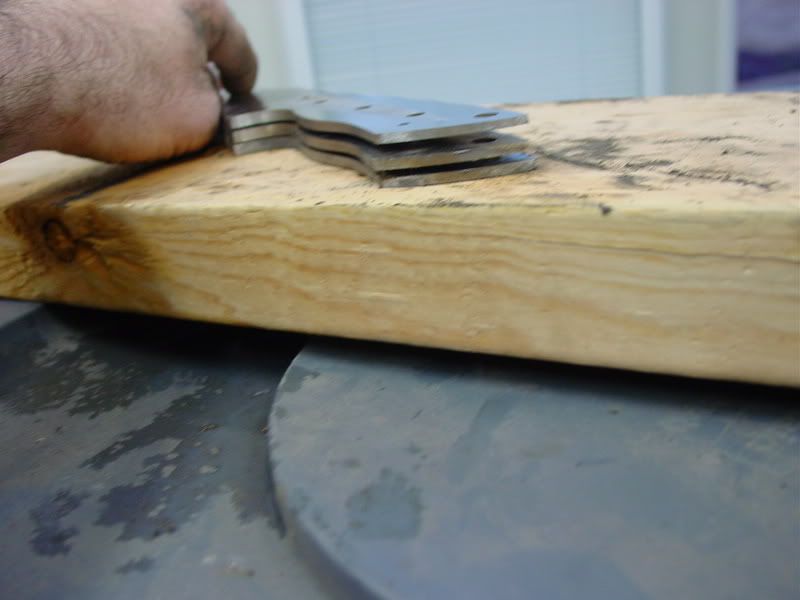John Barker
SUPERModerator & KNIFE MAKER
Why should a knifemaker taper the tang on their knife? Well, there are several reasons. First, tapering the tang gives the knife a balance that can't be achieved any other way. Tapering the tang gets rid of unnecessary wieght that you don't need. It also is considered the sign of a seasoned knifemaker by some. Visually, I think it adds another dimension to the knife. Tapering a tang can be a daunting task, but it's really not that hard. The first time I tried it, I was prepared to scrap the blade. But, it turned out pretty good. From that point on, I decided to do it on every knife. Once you do a few, it not only gets easier, but it gets faster. It probably takes me an extra 10 minutes to taper a tang and I'm not even that fast. So, here is the tutorial. I hope it helps.
-John
Here are 3 Tosas I have profiled out. I like to draw out where the front of the scale and grind will be so I know where the taper should start. Typically for me, it starts at the ricasso area. Drill the holes to secure your scales then you are ready to start the tang tapering process.
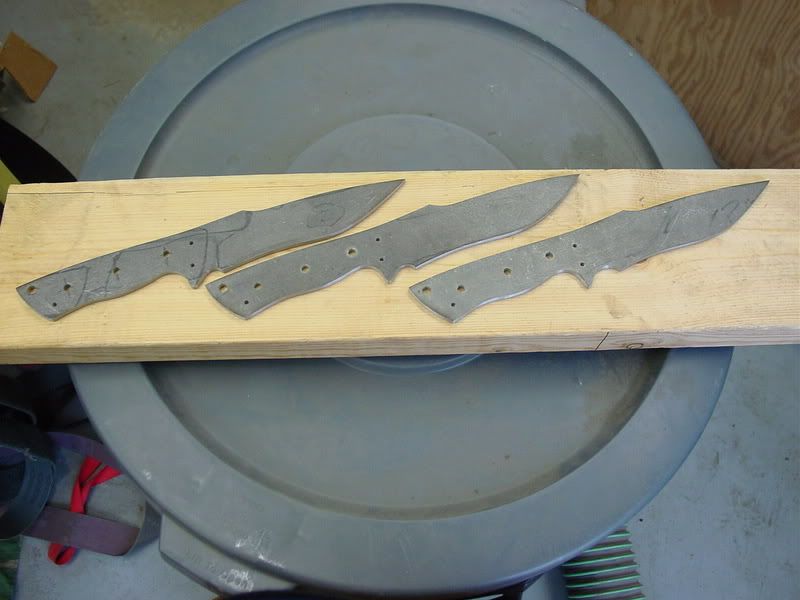
I start by using a 36 grit belt on a 5" wheel for most knives, but I may use a 3" wheel for smaller handles.
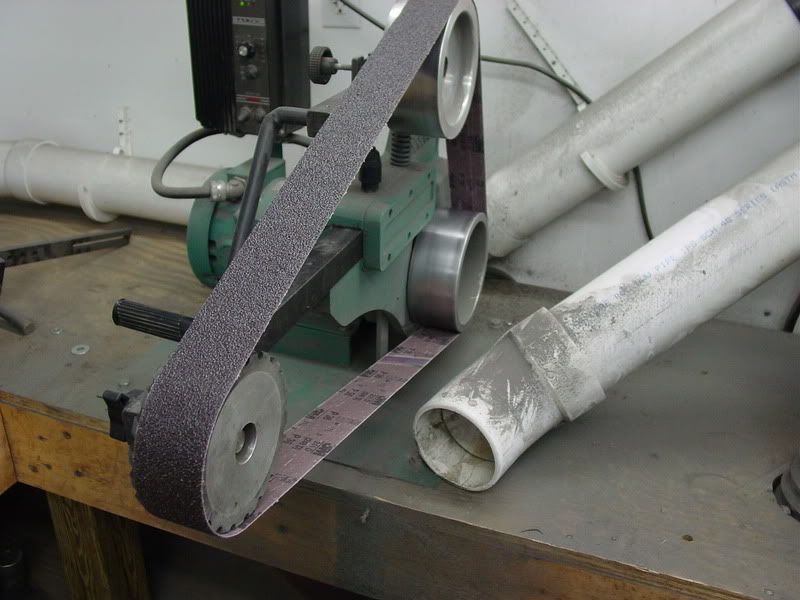
Now, here's the fun part. Just hold the tang against the wheel and start grinding out a trough. Make sure you don't go outside the profile. It's not a big deal if you do near the butt of the tang, but it can be up near the front. Just look over the top of the tang at the wheel so you can see what your grinding away. Take your time.
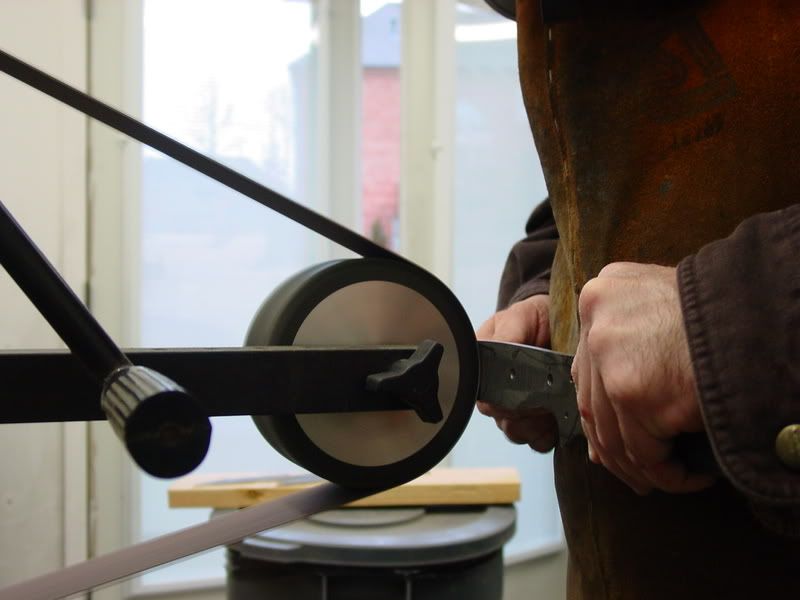
This is what it should look like as you go along.
Starting
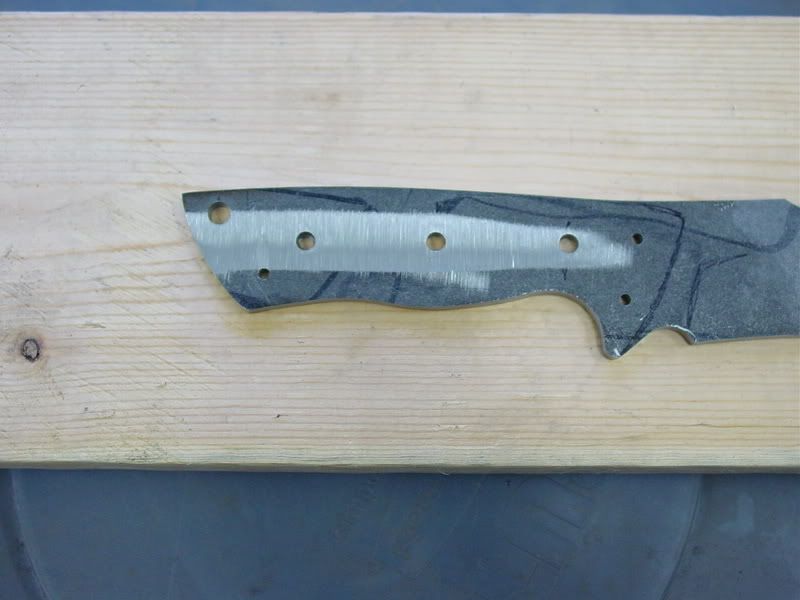
Finished on both sides. Try to make both sides look as similar to each other as possible to ensure the depth is about the same on each side. This will help prevent warpage during the heat treating process.
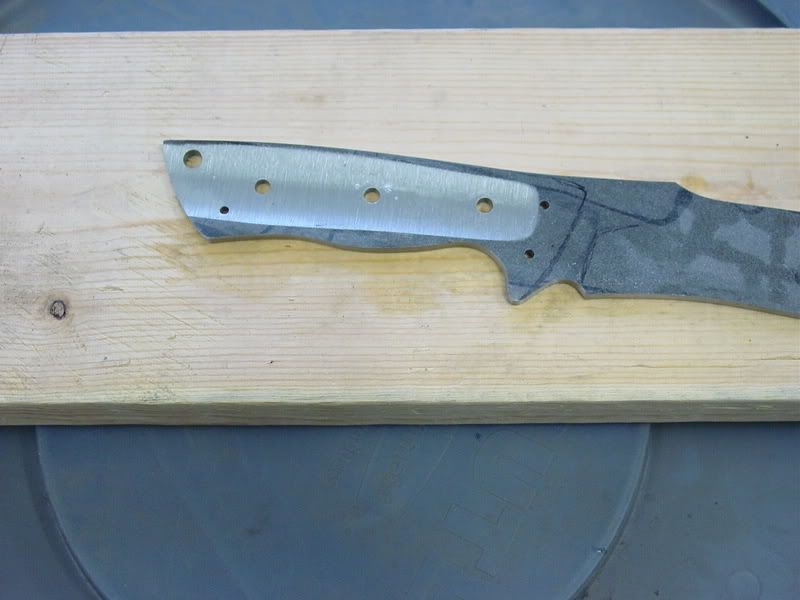
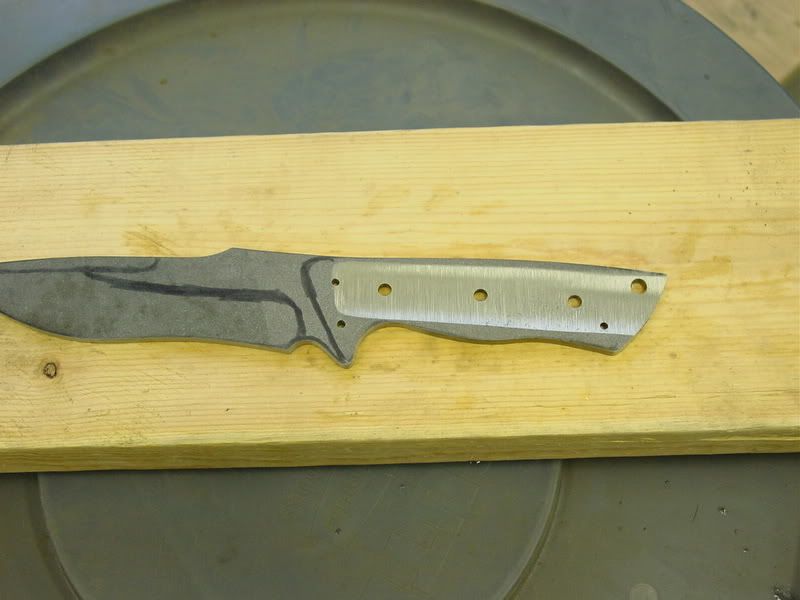
I hold it up and look at the end to be sure it is equal.
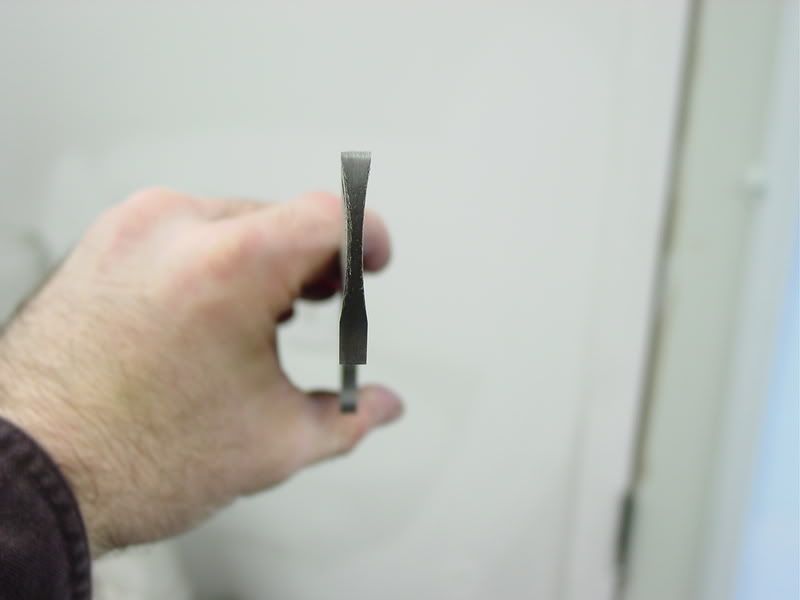
-John
Here are 3 Tosas I have profiled out. I like to draw out where the front of the scale and grind will be so I know where the taper should start. Typically for me, it starts at the ricasso area. Drill the holes to secure your scales then you are ready to start the tang tapering process.

I start by using a 36 grit belt on a 5" wheel for most knives, but I may use a 3" wheel for smaller handles.

Now, here's the fun part. Just hold the tang against the wheel and start grinding out a trough. Make sure you don't go outside the profile. It's not a big deal if you do near the butt of the tang, but it can be up near the front. Just look over the top of the tang at the wheel so you can see what your grinding away. Take your time.

This is what it should look like as you go along.
Starting

Finished on both sides. Try to make both sides look as similar to each other as possible to ensure the depth is about the same on each side. This will help prevent warpage during the heat treating process.


I hold it up and look at the end to be sure it is equal.


